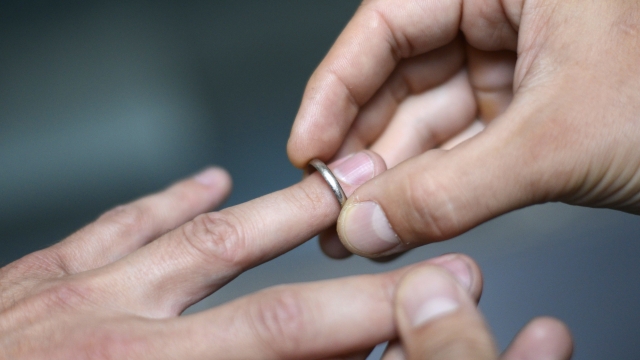I’ve been a “little old lady” for a really, really long time. Okay, maybe not that long, but since I’m barely in the second half of my 20s, it seems like it’s been forever.
There’s one thing that’s always left me feeling a little less in control, though: My finances.
When I was 18, I opened my first credit card – and by my 19th birthday, an ex helped me run up over $1,000 worth of debt. Sure, that doesn’t seem like a lot – but that’s exactly why it’s a problem. By the time I turned 22, a different ex helped me to ruin a bank account I had. (If your bank offers cash advances, do not take these cash advances, it’s a trap – trust me.)
By the time I turned 25, I had horrible credit and what felt like zero chance of recovering. Thankfully, over the past year, I’ve made a lot of positive financial strides – but it would have been much easier to save myself the headache in the first place.
Some of my issues with money are based almost entirely on procrastination. I often wait until almost the last minute to pay my bills.
I’ll write them on the calendar, the day that they’re due – often weeks ahead of time – and then I just won’t get around it until the day before it’s due. Sometimes, I procrastinate even writing the due date down in the first place, which can cause its own set of problems.
Thankfully, though, there are some grown-up ways to help manage your money better, without hiring someone to do it for you. (Because hiring a personal accountant is super expensive, guys. I checked.)
1. Make a list.
According to a 2015 study by Northwestern Mutual, the #1 cause of people creating a financial plan is a financial emergency. We get hit with a hard situation (such as my credit score dropping so low I couldn’t even open a bank account), and it’s easy to feel stuck. Unfortunately, this type of situation doesn’t always result in a financial plan – only about 20% of people have a written plan that they’re working on.
Maybe you’ve got a few things you already know you need to save up for. Great! Write them down on a piece of paper. You should try to be as specific as possible, but if you notice that some of your goals are directly connected to each other, it’s fine to lump them together. (For example, I’ve got a goal sheet of things I want to get for my dog, which includes things like microchipping, immunization boosters, and a spay – these all have to do with her, so they go together as a single savings goal. However, almost-connected things, such as credit card debt on two different cards, should be listed separately.) Try to think of everything you absolutely need to pay, and write those things down first.
If you know how much each of these things cost (and their cost isn’t likely to go up very much), go ahead and jot the price/cost down next to the item on your paper. If there is an ultimate deadline, write that down, too. If there isn’t already a deadline attached to the item, give yourself one – that’ll make it easier to push yourself out of procrastination mode and into react mode.
2. Make another list.
Once you’ve covered the things you need, make a list of the things you want. For me, that includes things like new pens, new tattoos, and a gazebo. None of these things are essential (well, the pens would be if I didn’t already have literally hundreds), but they’re things that would bring me joy – and joy is super important. If your financial plan only consists of the things that are essential, you’re not going to stick with it – you’ll be too busy splurging on the things you want and procrastinating on the things you need. (Hint: This is bad.)
Try to make this list as specific as possible, too – that way, you’ll be able to get prices for these things, as well. Arrange your list from smallest price to biggest price, and then set it aside. These are the things you’re not going to buy right now, but will slowly start working toward as you build up your savings.
3. Break down the “needs” list into smaller savings payments.
If you’ve got big things on your list, such as the down payment for a house or car, credit card debt in the five-figures, or a wedding coming up, it can be daunting to see such big numbers on the page. (Technically, a wedding is a want and not a need, but I understand if you’ve put it on your “need” list anyway.) By breaking these big expenses down into smaller amounts, according to your deadlines and pay schedules, your “to save” list now has a bunch of small numbers, instead of a couple big numbers. Since the numbers are smaller, you’re less overwhelmed by them – which prevents procrastination.
A bunch of small numbers are registered by the brain as insignificant. Think about how many times you’ve spent your pocket change, without even thinking about it – after all, it was just change, and change is insignificant (unless you’re completely broke). Once you get started saving, it’ll be easy to keep saving. It’s the same for any adulting task, really – once you get started, momentum picks up, and you get going faster and better.
4. Open a savings account – or, preferably, a few.
If your bank lets you open a few different savings accounts, take advantage of this feature. This will let you save in multiple spots, so that a dip into your “emergency fund” doesn’t cut into your “new car fund”. Obviously, the nicknames you give to each of these accounts may be different than the ones I’ve provided, but the process is going to be the same.
Once you’ve got these savings accounts, it’s important that you promise yourself you won’t touch them for something other than their intended purpose. This shouldn’t be a situation where you’re hiding money from yourself. Instead, think of it as having multiple wallets, for multiple different situations. Try to keep track of how much you’ve put into each account and how much you’ve taken out, but not necessarily the available balance. Of course, you should watch for unexpected fees, but if you’re effectively making your deposits and collecting interest, most fees will be covered by bonuses, rather than your planned deposits.
5. Get saving, as much as possible.
If your bank offers any type of automatic savings transfers – such as those that automatically “move the change” into your savings account when you make a purchase, sign up for them. If you qualify for any programs that may raise the interest rate in your savings account, make a note to speak with your bank about it as soon as you can. All these little bonuses make it easier to save up for everything you want, without saving any more than you need to. You see what I did there?
If you receive unexpected money that wasn’t a part of your budget, it’s a great idea to dedicate a portion of that money to your savings, as well. After all, you didn’t expect to get it, so it’s like a free gift from the universe. This can count toward your planned deposits, but if you can afford it, don’t track this one. Let it be a bonus for you, for later. The extra interest payments will add up.
When you give yourself extra advantages, you’re literally finding extra money, without even trying. Once you’ve made all the savings transfers you planned to do, you’re going to have extra money in there, because of interest and the “change jar effect”. This money is now yours to spend as you wish – either going toward buying the things off your “want” list, or to give you a head-start on the next thing on your “need” list. (Just remember, if you use it for the “wants”, it’s going to take you a little longer to cross off that next “need”.)
[interaction id=”575951cbfc11715952735636″]










One thought on “How To Be A Grown-Up With Your Money”
Pingback: Study Explores The Truth About Living Together | KitschMix